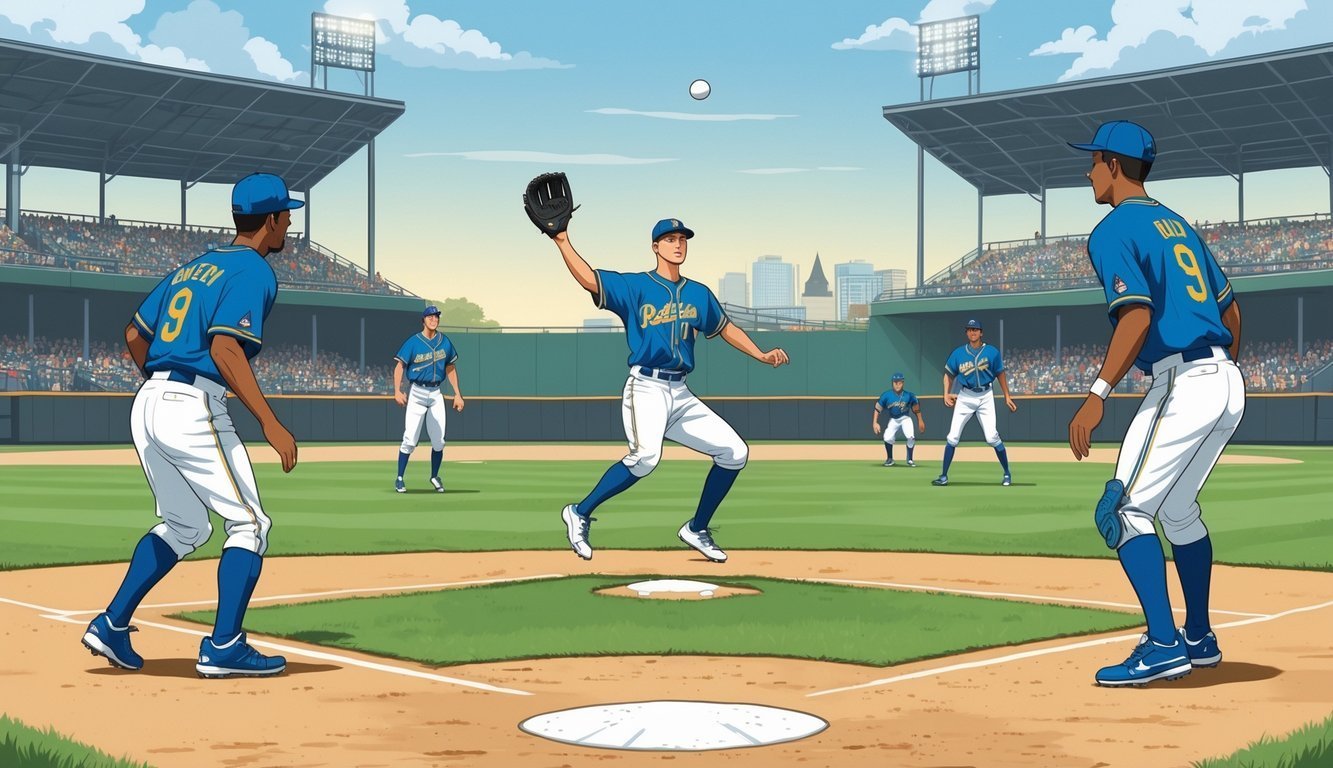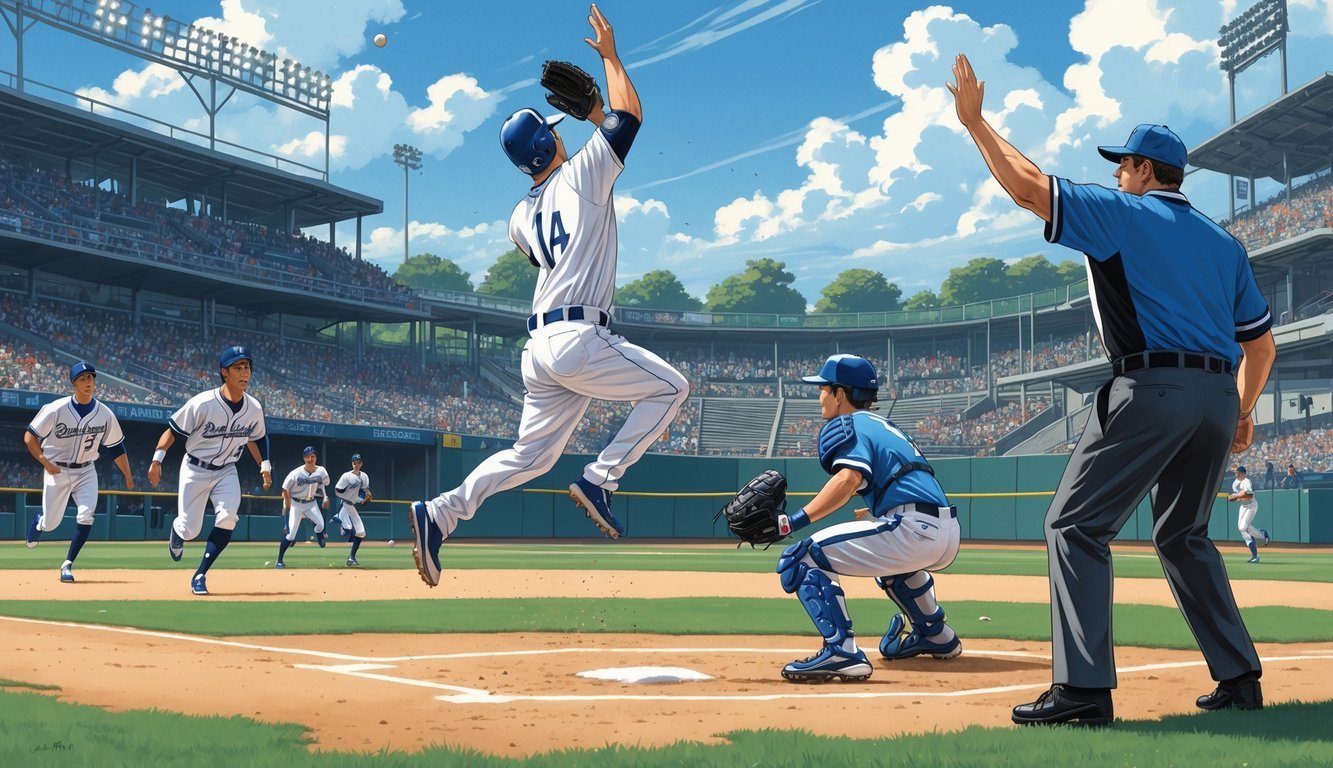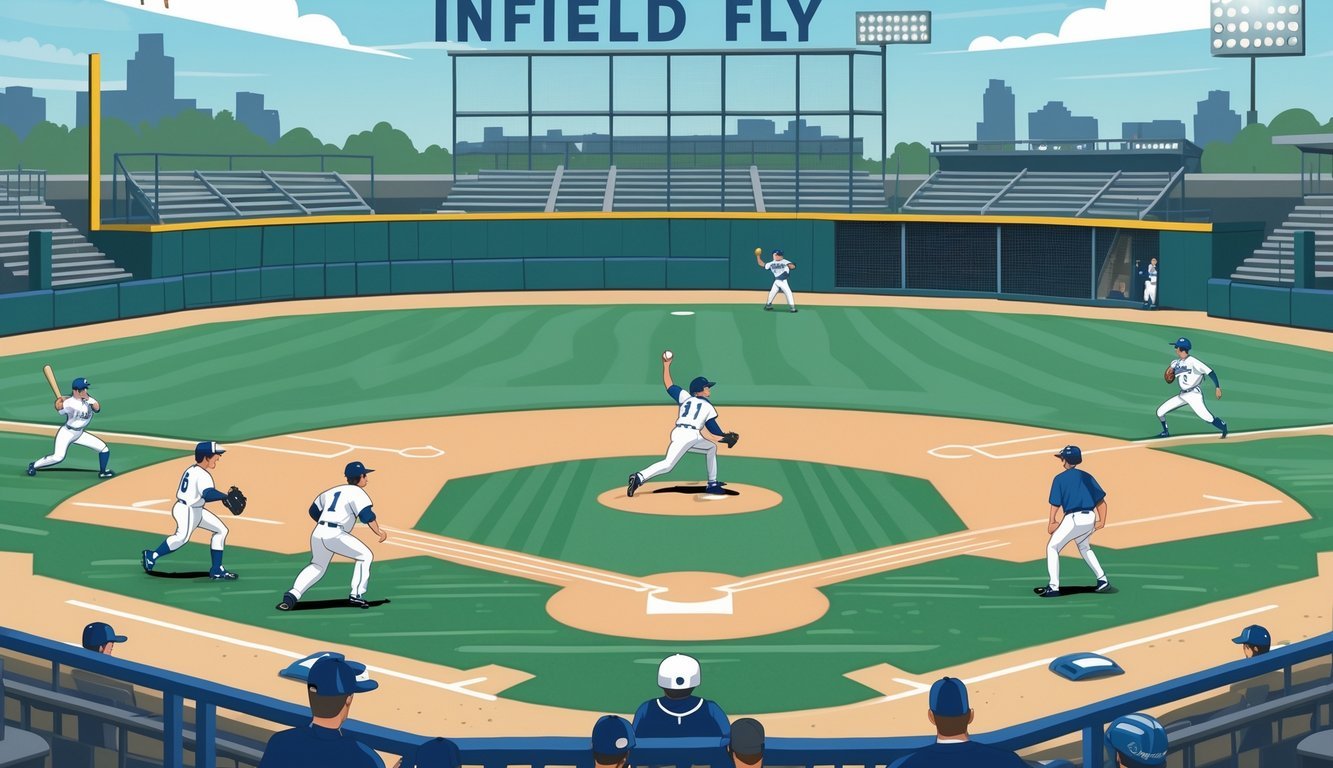Physical Address
304 North Cardinal St.
Dorchester Center, MA 02124
Physical Address
304 North Cardinal St.
Dorchester Center, MA 02124
The infield fly rule protects base runners by automatically calling the batter out on easy pop-ups when there are runners on first and second or loaded bases.

The infield fly rule might look confusing at first, but it actually plays a big role in keeping baseball fair. When a pop-up could be easily caught by an infielder and there are runners on base, the batter’s automatically out.
This stops the defense from pulling sneaky tricks on the runners. The rule protects base runners from getting forced out just because a fielder decided to drop the ball on purpose.
Ever wondered why this rule even exists or when it actually comes into play? If you get how the infield fly rule works, you’ll start to notice little details during games, and those moments won’t catch you off guard when you hear the term tossed around.
Honestly, it’s a small detail, but it really does matter for fair play and keeping the game moving.
Learning this rule can make watching baseball a lot more interesting, especially when there’s chaos near the bases.
You’ll start to spot how it fits into the bigger picture and why umpires bother with it at all.
Are you tired of spinning your wheels and getting nowhere? Simply put, you’re out of sync: you’re out of alignment with your astral configuration.
But: there’s a kind of map that can help you reclaim your alignment. Think of it as your own personal blueprint to success and happiness: a blueprint that will help you live your most amazing life.
Get started here.

The infield fly rule protects runners from getting doubled or tripled up on easy infield pop flies.
Umpires have to watch closely and decide if a fielder could catch the ball with ordinary effort.
This rule changes how everyone on the field reacts during certain pop-ups.
The rule comes into play for a fair fly ball that an infielder could catch with ordinary effort.
It’s not for line drives or bunts—just those high, shallow flies that hang up long enough.
The main idea is to keep runners safe.
Without the rule, fielders could drop the ball on purpose and suddenly get two or three outs, just by trapping the runners.
So, the infield fly rule stops unfair double or triple plays.
It keeps the defense honest and protects runners from getting trapped.
You’ll only see the infield fly rule in these situations:
If those things aren’t true, the rule doesn’t apply.
The umpire’s watching for these moments because the rule’s only supposed to stop trick plays when multiple runners are at risk.
Umpires have to decide if the ball could be caught with ordinary effort.
That means a fielder should be able to make a routine catch—no crazy dives or sprints.
They look at:
It’s a judgment call, so sometimes umpires disagree, but they try to keep it fair.
Usually, the infielder is someone near the bases or shortstop.
The ball can float over the grass or just above the dirt.
Umpires make the call right away, while the play’s happening.
Once the umpire calls the infield fly, the batter’s out, even if nobody catches the ball.
The ball stays alive.
Runners can try to advance, but they risk getting thrown out.
If someone catches the ball, runners have to tag up before moving.
If the ball drops untouched, runners don’t need to tag up—they can go for the next base.
The rule only removes the force play on the batter.
Normal force plays for runners still exist if they try to move up.
Defenders usually try to catch the ball, but you’ll see them make quick throws or tags to get runners if they take a chance.
| Condition | Effect |
|---|---|
| Ball caught | Batter out, runners tag up |
| Ball dropped | Batter out, runners can run |
| Rule not called | Normal play continues |
The infield fly rule keeps things fair and stops the defense from pulling off sneaky tricks at big moments.

This rule can get messy, and honestly, it’s sparked a lot of arguments over the years.
Special cases, famous calls, and misunderstandings all play a part.
You’ll only see the infield fly rule when runners are on first and second or the bases are loaded, and there are fewer than two outs.
It’s there to keep runners from getting doubled off unfairly.
The rule doesn’t count if the ball’s foul, or if it’s a line drive or a bunt.
So, if you see a bunt pop-up, don’t expect the infield fly rule.
Weather doesn’t change the rule, but if the ball drops or there’s interference, umpires have to make a call.
The rule is only for fair balls, not foul ones.
Sometimes, more than one out can happen after the call, especially if runners get tagged or forced out.
You might also see an appeal play after a catch or a drop.
People still talk about that 2012 National League Wild Card Game with Matt Holliday.
The umpire called the infield fly rule on a high pop-up, and chaos followed.
Another big one involved Pete Kozma in a playoff game the same year.
The rule changed the outcome by taking away the defense’s edge.
Andrelton Simmons has been in the middle of some wild plays where umps had to think about using the rule.
Sam Holbrook, an umpire, got a lot of attention for how he explained and enforced the rule in a few games.
A lot of folks think the infield fly rule always means the batter’s out, but that’s only true if the umpire says the ball’s catchable.
If the ball drops untouched, runners can still advance and might get tagged out.
Some people believe the rule covers the whole infield, but it only applies if the umpire thinks a catch is likely.
Moving an outfielder closer doesn’t change anything.
Fans sometimes get confused when they see a ball drop in or when multiple outs happen.
If the umpire calls the rule, an error doesn’t erase it.
Watching for interference and knowing the baselines helps clear things up.
If you want to look it up, it’s Rule 6.05(l) or Rule 5.09(a)(12) in the official rulebook.
Those cover the details and boundaries.

You might still have questions about how the infield fly rule works in real games, when it kicks in, or why it’s even a thing.
Picture runners on first and second with less than two outs.
The batter pops one up near the infield.
If an infielder can catch it easily, the umpire calls the batter out right away.
The runners don’t have to leave their bases.
You’ll only see the rule when there are less than two outs.
There must be runners on first and second, or all the bases loaded.
The ball has to be a fly ball that an infielder could catch without much trouble.
Yes.
If the ball lands foul, the rule doesn’t apply.
If the umpire thinks the ball can’t be caught with ordinary effort, the rule isn’t used.
The rule keeps you safe from easy double or triple plays.
You can stay on base without worrying about getting forced out just because of a dropped pop-up.
It exists to stop the defense from pulling tricks and turning easy double plays.
Without it, fielders could just drop pop-ups and get multiple outs, which wouldn’t really be fair.
The rule keeps things even for the runners.
No, it doesn’t. The infield fly rule kicks in only when there are runners on first and second, or when the bases are loaded.
If there’s just a runner on first, you don’t need to worry about this rule at all.